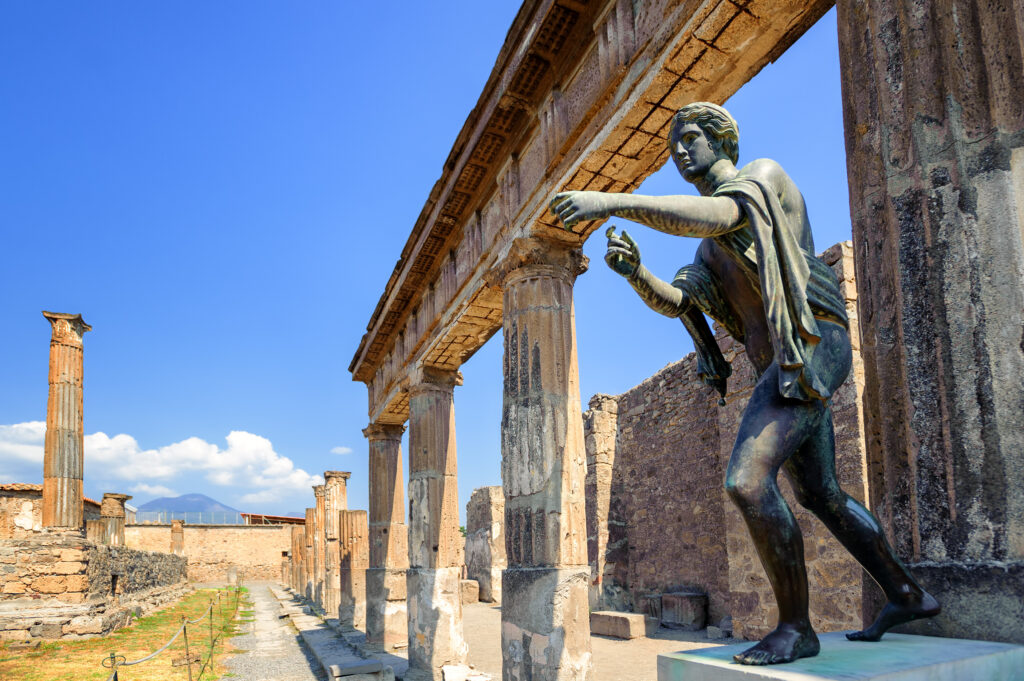
Turbulent and endearing, irreverent and religious, a beautiful landowner with an arm of the sea: Naples never ceases to surprise and dazzle. Naples is more a city to live in than to visit, despite its exceptional historical and religious heritage. Churches, museums, gardens, villas, charming alleyways and seaside islands: a stay in Naples is a unique experience and a wonderful slice of life. Dominated by Mount Vesuvius, it's hard to pin down the city's identity, so many shapes and forms have been shaped by its history. Let yourself be carried away, sit down in the restaurants, smile at the noisy folklore of the Neapolitans, take part in the ritual of the evening stroll and appreciate how life is improvised in southern Italy! Wondering what to see and do in Naples? Here are the top 18 must-sees in Naples!
1. Charterhouse of San Martino, Naples
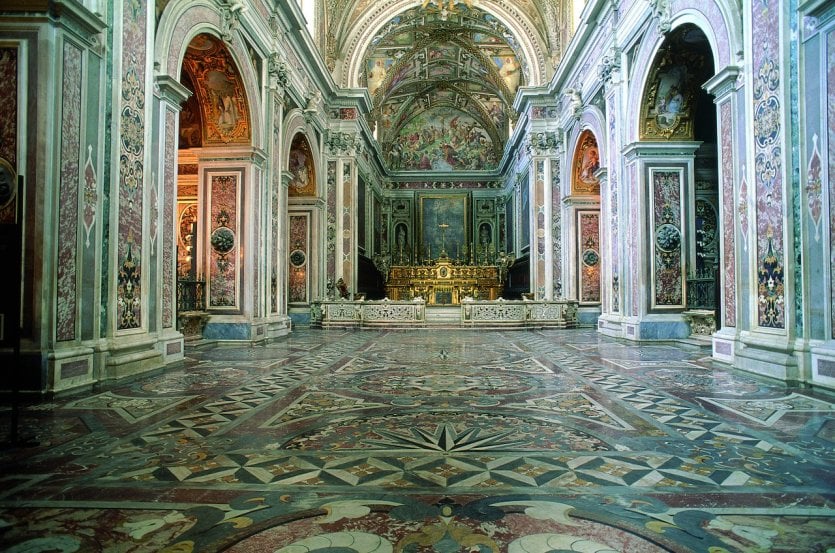
Charterhouse of San Martino© Alfredo VENTURI - Iconotec
The Charterhouse of San Martino is a vast monumental complex, erected on top of the Vomero hill by the d'Anjou family in the 14th century. Cosimo Fanzago, an Italian architect and sculptor considered one of the greatest artists of his time, oversaw its construction. This remarkable building is a perfect example of Neapolitan Baroque. It houses a sumptuous Baroque church, a cloister lined with marble columns and lemon trees, and a museum dedicated in part to Neapolitan nativity scenes. The museum boasts the world's largest collection of cribs, the centerpiece of which is the impressive Cucciniello crib. From the heights of the Charterhouse, the view embraces the old town and stretches as far as the Gulf of Naples. Don't forget to take the pedamentina, one of Naples' oldest passageways, with its 414 steps! Book your tickets here to take full advantage of our special offers and make the most of your stay in Naples.
2. What to do in Naples Visit the Basilica of Santa Chiara, the city's largest Gothic church
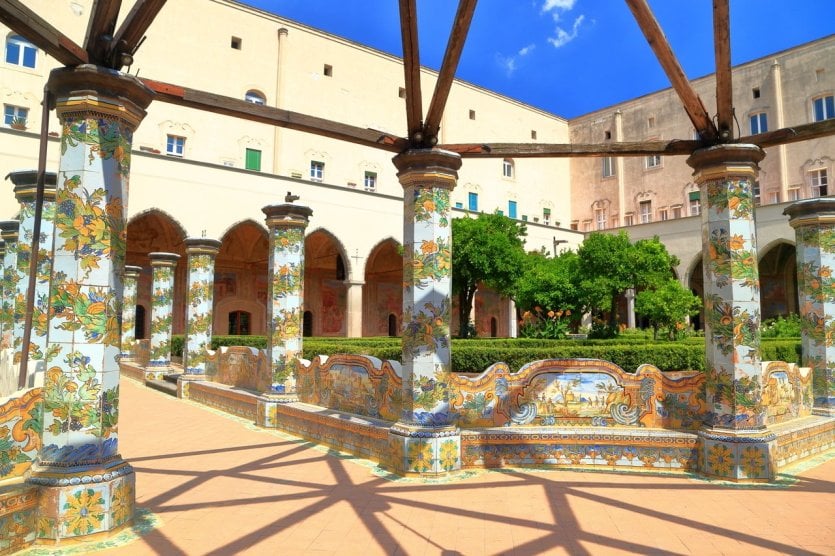
Santa Chiara Basilica© Inu - Shutterstock.com
If Naples is one of Italy's must-visit places, it's not for nothing! Located in the Piazza del Gesù Nuovo, in the heart of Spaccanapoli, Santa Chiara is actually a monastic complex built between 1310 and 1340 by Robert I of Anjou. A perfect example of the city's largest Gothic building, the monastery has been restored in Baroque style. It houses the city's largest Gothic church and a monastery of Poor Clares and Franciscans. The latter stands out for the beauty of its cloister decorated with majolica, the typical Neapolitan earthenware. The walls, colonnades and benches are entirely tiled, creating multiple paintings of landscapes and rural scenes. There's also a small museum displaying original works of art.
3. Discover the history of Naples at the Archaeology Museum
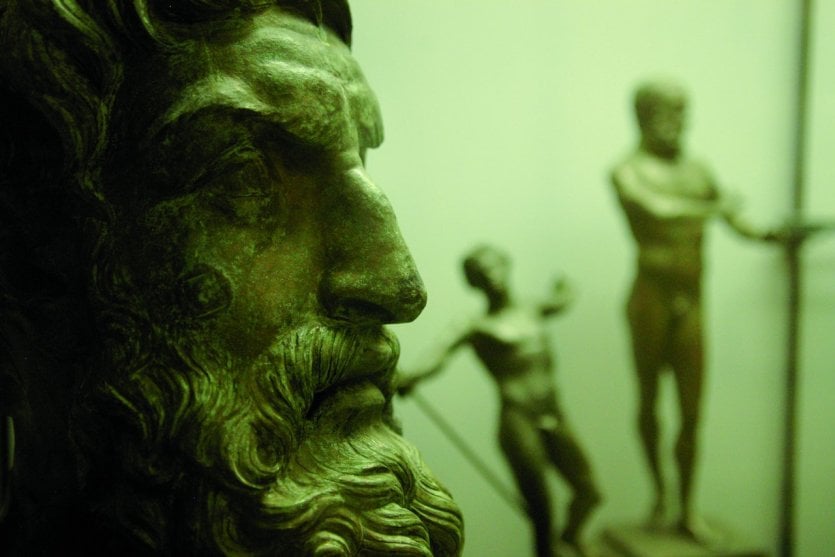
The Museum of Archaeology© Stephan SZEREMETA
What to see in Naples The Archaeology Museum is the world's largest museum dedicated to Greek and Roman antiquity . Housed in a magnificent 16th-century palace, it preserves collections of works of art that once belonged to the Farneses, as well as sculptures, mosaics and frescoes found in Pompeii and Herculaneum.
The Doryphorus stands alongside the monumental Farnese Bull, a sculpture measuring 5 meters in height and weighing 24 tons. It is made up of several characters drawn from a mythical scene. On each floor, you'll discover magnificent antique mosaics, including the Secret Cabinet (you'll need a permit, available at reception, to enter). This discreet room devoted to erotic works is only visible to adults. Indeed, the Romans were not known for their modesty, so some of the frescoes could make even the most sensitive of you blush! Click here to book your tickets easily before the visit and avoid queues.
4. What to do in Naples Visit the Castel dell'Ovo
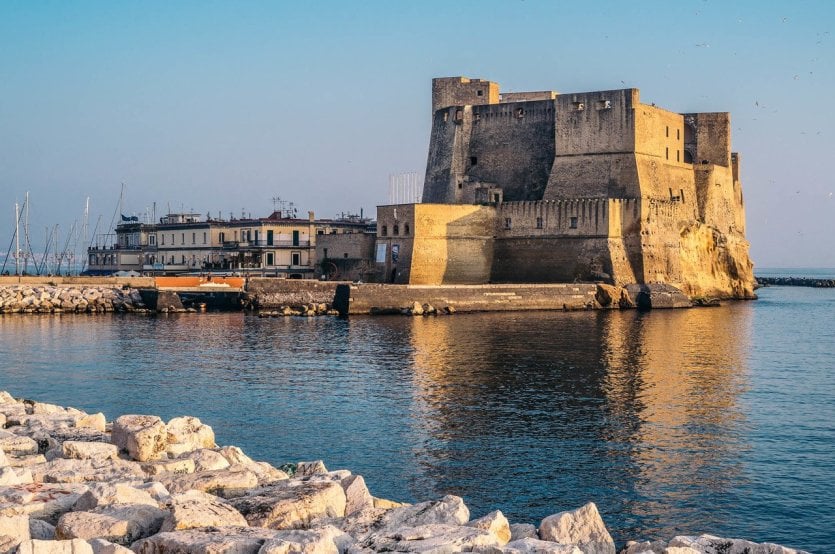
Castel dell'Ovo© HUANG Zheng - Shutterstock.com
The Castel dell'Ovo - meaning Egg Castle - has stood on the islet of Megaride since the 11th century, when the first version of the building was constructed. Many alterations and centuries later, it tookon its imposing, austere air, reinforced by defensive towers and walkways. Today, it houses the Museum of Prehistory, which displays the clothing, ceramics and everyday objects of the ancient local population. The name of the castle is still a mystery, but legend has it that the poet Virgil placed a magic egg in the castle: the day it breaks, the castle and the town will suffer a terrible catastrophe...
5. The Cathedral, a must-see in Naples
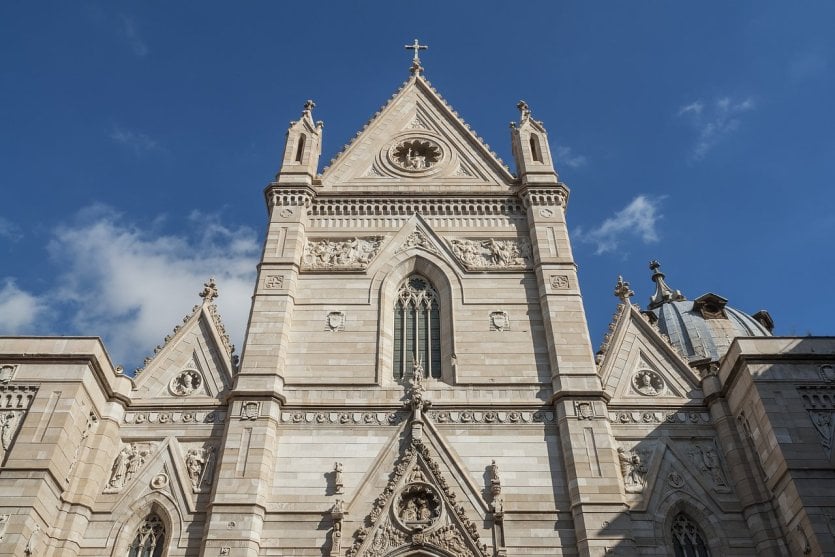
Naples Cathedral© Zyankarlo - Shutterstock.com
Built between the late 13th and early 14th centuries, Naples Cathedral is known to Neapolitans as the Duomo San Gennaro, as it houses the relics of the city's patron saint. Listed as a Unesco World Heritage Site, few religious buildings have undergone so many alterations, as can be seen today on the façade, where different styles are juxtaposed. The Duomo's most important room is the chapel of San Gennaro, where part of its treasure trove of precious stones, gold, solid silver statues, tiaras set with gold and rubies... is on display. The latter houses vials containing the solidified blood of the city's patron saint. Twice a year, in May and September, a miracle involving a large number of devotees takes place: the blood contained in the vials liquefies. If, unfortunately, the contents do not liquefy, this heralds bad omens for the city of Naples.
6. What to do in Naples Stroll through the Galleria Umberto I
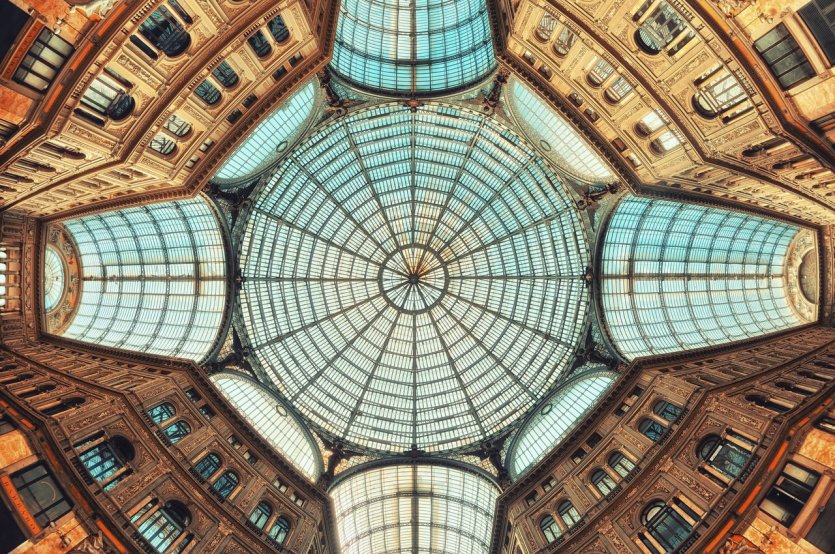
Galleria Umberto I© Giorgiogalano - iStockphoto
The Galleria Umberto I, the city's shopping mall, is above all an architectural treasure topped by a glass dome supported by 16 metal arches, making it one of Naples' must-sees. Light floods in, revealing the details of a superb floor mosaic depicting the signs of the zodiac. The gallery is thus bathed in a pleasant atmosphere that accompanies onlookers as they shop and dine in the cafés and restaurants. If you see a queue in front of a modest patisserie, you'll know that this is where the city's best sfogliatelle are served!
7. What to do in Naples See the Castel Nuovo
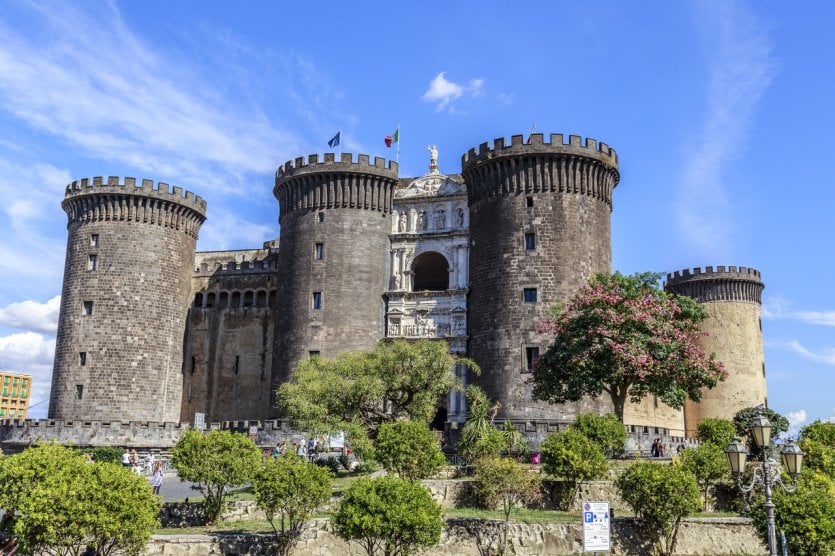
Castel Nuovo© Luciano Fochi - Shutterstock.com
A feeling of déjà-vu? The Castel Nuovo was built in the 13th century on the model of the Château d'Angers. Built facing the sea, its powerful stature is supported by five defensive towers and topped by high ramparts. Made up of massive towers and covered in grey volcanic rock, it is a must-see from the harbour. A perfect example of defensive architecture, it nevertheless reveals a few surprises, such as the magnificent triumphal arch that greets you at the entrance. Now home to the Musée de la Préhistoire, the castle is also used for a variety of events, including summer theater performances.
8. The must-see San Carlo Theatre in Naples
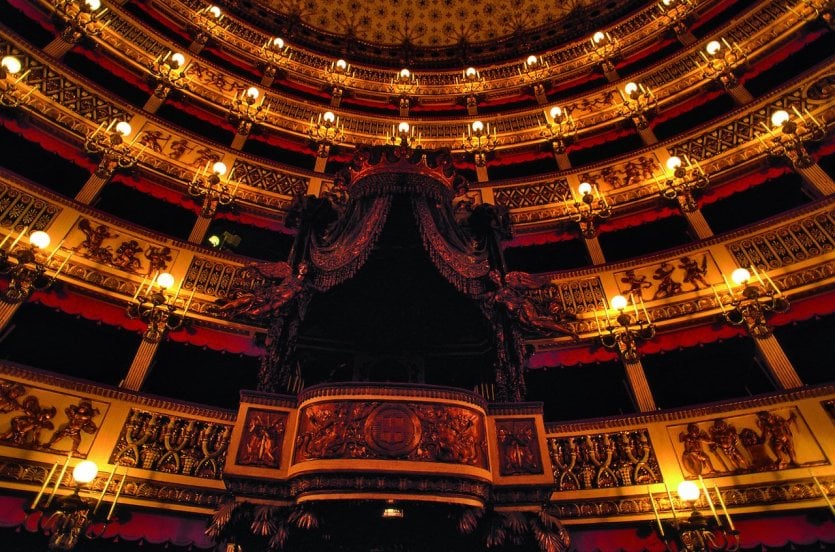
San Carlo Theater© Alfredo VENTURI - Iconotec
What to do in Naples The San Carlo Theatre, built during the reign of the Bourbons, is not only the most famous opera house in Naples, but also one of the most beautiful in Italy. You'll be dazzled by the splendor of its interior decoration, draped entirely in gold and red velvet. The six floors of boxes, arranged in a horseshoe pattern, rise up to the ceiling, which features an exquisite fresco by Giuseppe Cammarano. The entire décor has been completely redone, as it was originally, after a terrible fire in 1816.
9. Piazza del Plebiscito, Naples' largest square
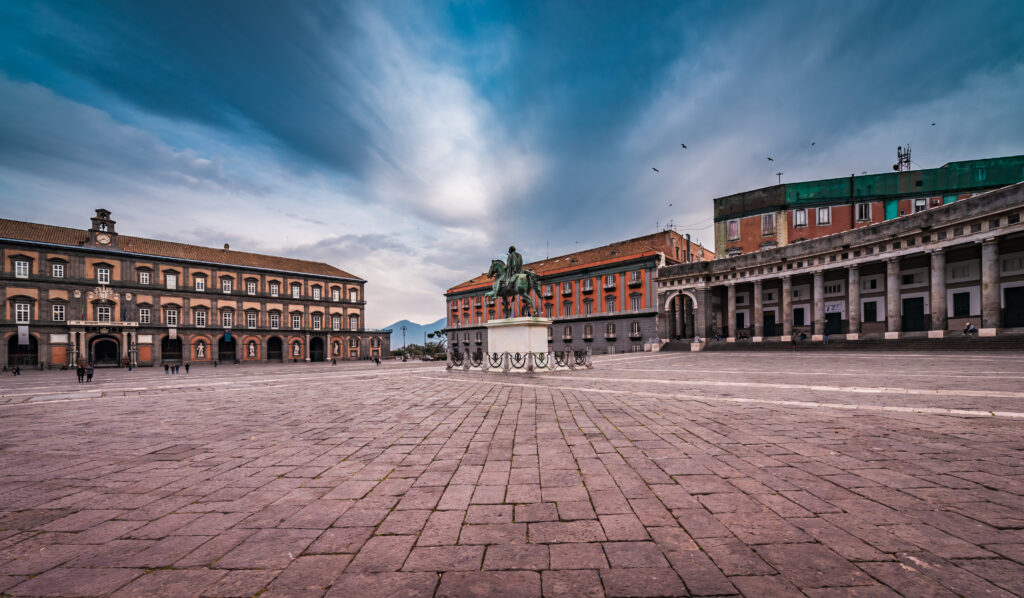
This square measures 25,000m2, making itthe most spacious in Naples and a coveted spot for Neapolitans. Its position also makes it ideal for tourism. It is surrounded by four monuments: the Basilica of St. Francis of Paola, the Royal Palace, the Prefecture and the Palace of Salerno. It's a place you can't afford to miss! As you leave the piazza, you'll see one of Europe's oldest opera houses on your right, the Teatro San Carlo. One of the world's finest opera houses, it is considered a benchmark in its field in Italy. If you have the opportunity to see an opera, don't miss it!
10. What to do in Naples Climb Mount Vesuvius, a must!
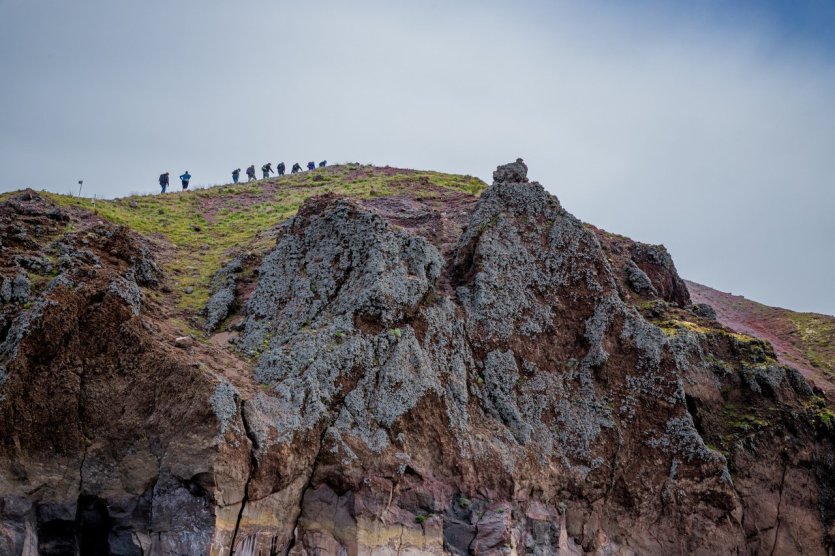
vesuvius© Gerald Villena - Adobe Stock
One of Europe's most famous volcanoes, Vesuvius is a must-see during your stay in Naples. It is particularly famous for its great eruption of August 24, 79 AD, which destroyed the towns of Pompeii and Herculaneum and buried them in ash. It is the only volcano in continental Europe to have erupted in the last century. It last erupted in 1944, but is still considered active. If you decide to climb Vesuvius and discover its history and crater, you'll need to buy a ticket. We recommend that you book a ticket for both Vesuvius and Pompeii via our partner. Not only will you save money, but you'll also benefit from a guide who can take you back in time and show you the most spectacular sights. You can also read our article onhow to visit Pompeii and Vesuvius from Naples to help you get organized and save time.
11. Explore its famous underground passages
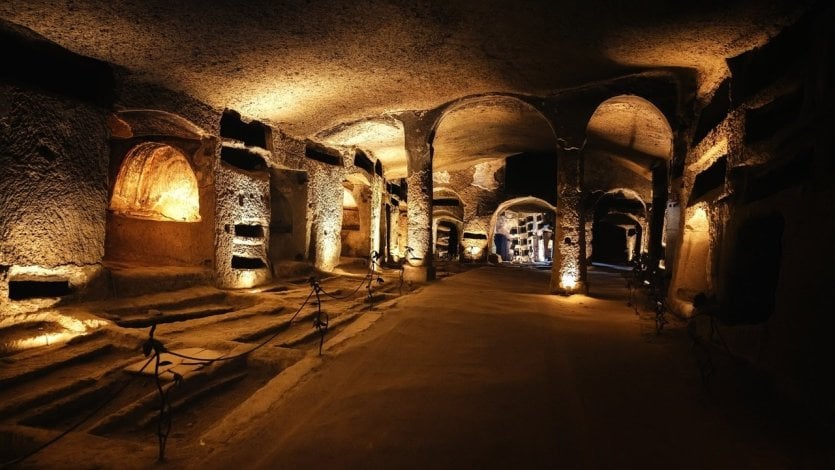
The underground passages of Naples© Sved Oliver - Adobe Stock
Enjoy a guided tour of around 1h30 to explore these immense aqueducts, built by the Greeks and used by the Romans, which are one of the must-see attractions in Naples. After the cholera epidemic of the 19th century, they were closed for sanitary reasons. They were later converted into bomb shelters during the Second World War, saving the lives of over 4,000 Neapolitans. Here you can see the ruins of Naples' Greco-Roman theater , where Emperor Nero is said to have performed, and also learn about the living conditions of Neapolitans during the war. We advise you to book your tickets via our partner site, so you can benefit from a guide who can tell you all about the history of this underground Naples and its legends.
12. What to do in Naples Visit the Capodimonte Museum
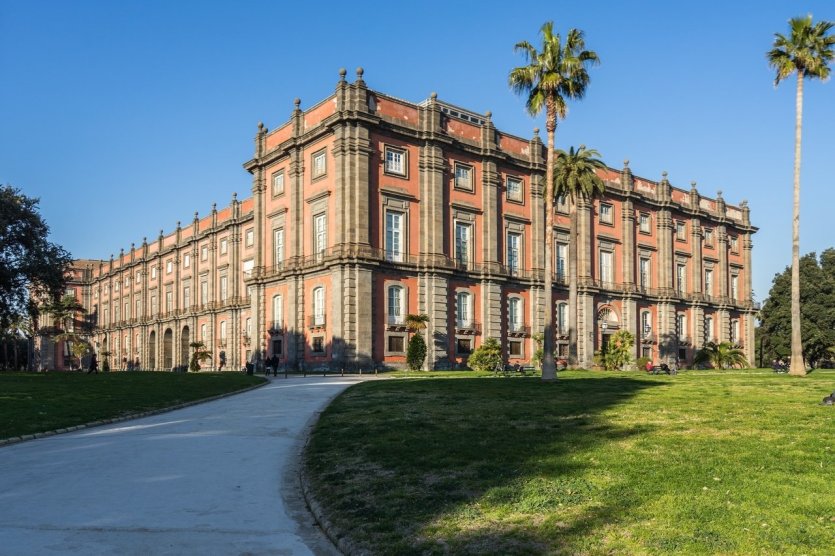
Capodimonte Museum© Francesco Bonino - Wirestock
A must-see in Naples for lovers of Italian painting : discover the Capidomonte Museum, one of the most important museums in Naples, where you can admire masterpieces by Florentine painters such as Botticelli, Masaccio, Titian, Vasari, Parmigianino, Caravaggio and many others. For those who prefer contemporary art, you'll discover the collection created by Andy Warhol in 1985, including his famous Vesuvius . And for architecture fans, a visit to the royal apartments, home to the Bourbons, the French and the Dukes of Aosta, is sure to delight! If you want to avoid the queue at the entrance, we recommend you buy your tickets online.
13. What to do in Naples? Climb Sant'Elmo Castle
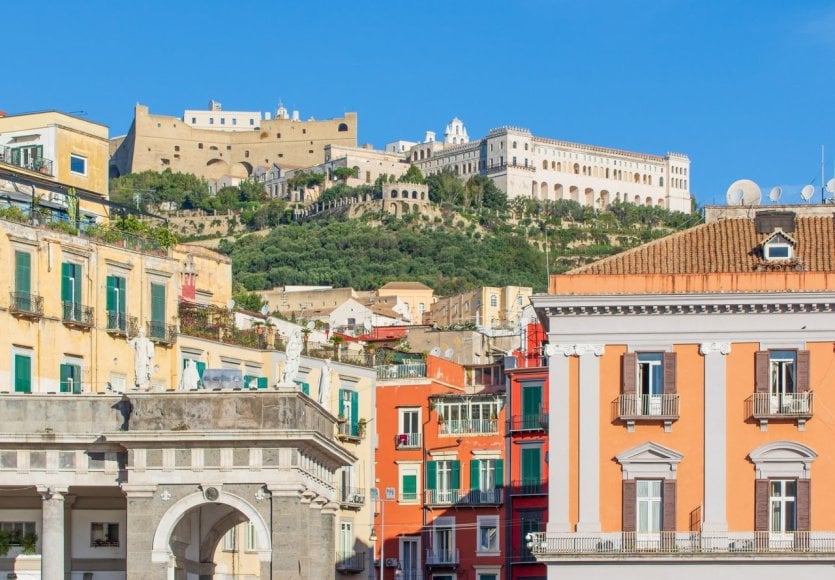
sant'Elmo Castle© SirioCarnevalino - Adobe Stock
Situated on the Vomero hill, this ancient medieval palace has dominated Naples for 700 years and offers an exceptional view of the city, its gulf, Vesuvius, the seafront, the Bay of Naples, the historic center and its western districts. Unfortunately, you won't be able to visit the inside of the enclosure, which has been transformed into a multicultural center, but temporary exhibitions, concerts and shows are organized quite often. Don't miss the curious clock next door, which bewilders visitors. It is said to represent the inner time, which explains why the hands turn in the wrong direction.
14. Stroll down Via Spaccanapoli in Naples' Old Town
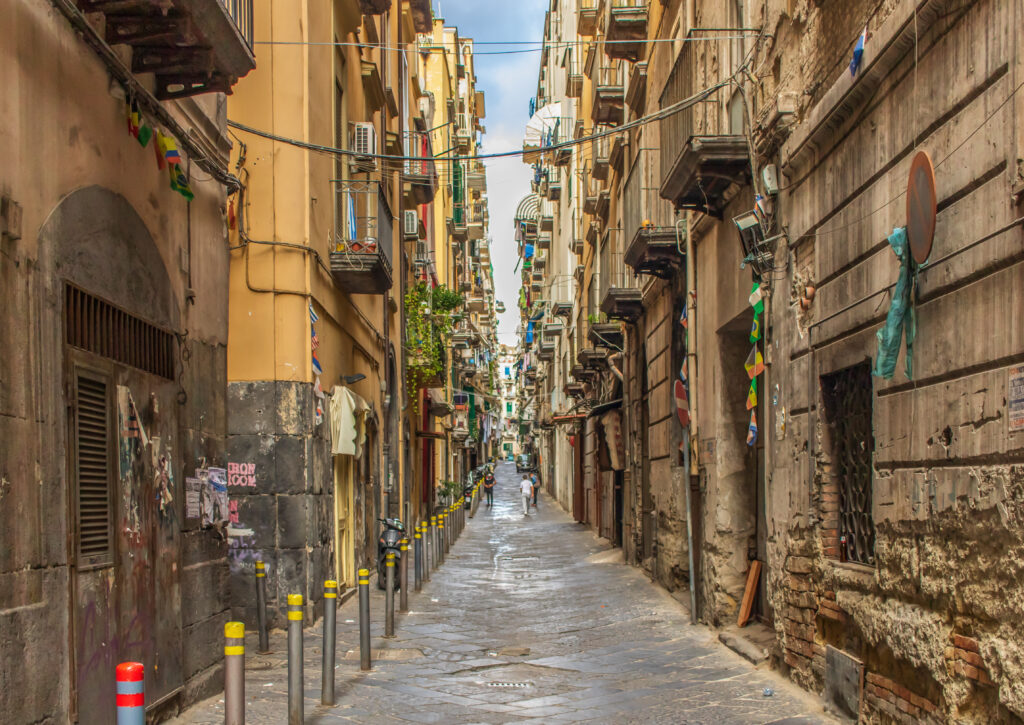
Visit Via Spaccanapoli , one of the city's main thoroughfares! It's located in one of Naples' oldest districts and is over two kilometers long. To enter Spaccanapoli is to enter the authentic Naples : watch Italian mammas talk to each other from their balconies, drying their laundry on ropes suspended overhead; inhale the scent of Mediterranean flavors emitted by pizza makers in the kitchen; watch Vespa drivers weave in and out of passers-by... The experience is well worth it, and allows you to discover the essence of Naples, a multi-faceted city where tags mingle with monuments and dilapidated buildings rub shoulders with beautiful palaces.
15. What to do in Naples Visit the archaeological park of Pompeii
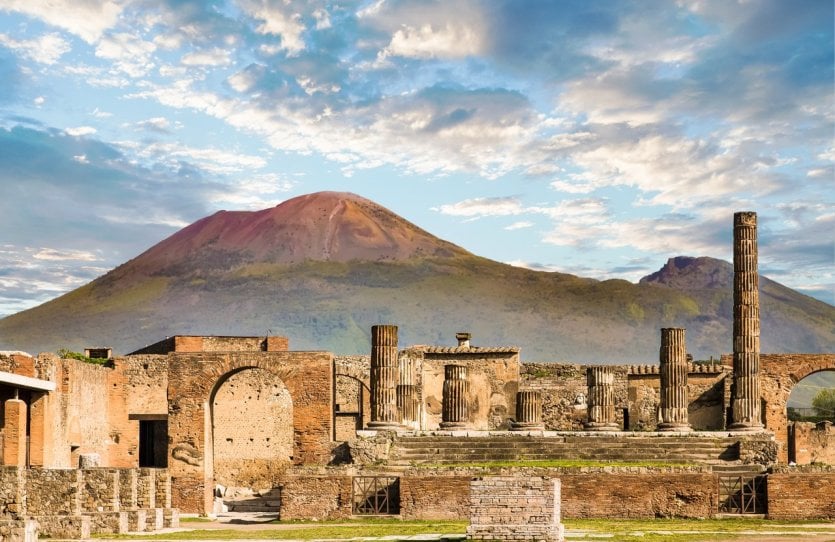
Pompeii Archaeological Park© dbvirago - Adobe Stock
On August 24, 79, the eruption of Mount Vesuvius buried Pompeii, a town of 20,000 inhabitants, under ash, volcanic dust and pumice. A visit to Pompeii is a must around Naples. It has even become the most visited archaeological site in the world. In fact, this catastrophe has frozen, like a snapshot, the customs of the Pompeians and their life at the time of the eruption. Here, you can admire the remains of richly decorated houses, including the superb mosaics of the Houses of the Boars, Poquius Proculus and the Tragic Poet. Listed as a Unesco World Heritage Site in 1997, it is a fascinating place for all history and antiquity enthusiasts.
The site attracts thousands of visitors every year. To avoid queuing, we recommend that you book your ticket online via our partner site. You'll also benefit from a guide who will tell you all about Pompeii's fascinating history and show you its most emblematic remains.
16. The city of Herculaneum, a must-see during your stay in Naples
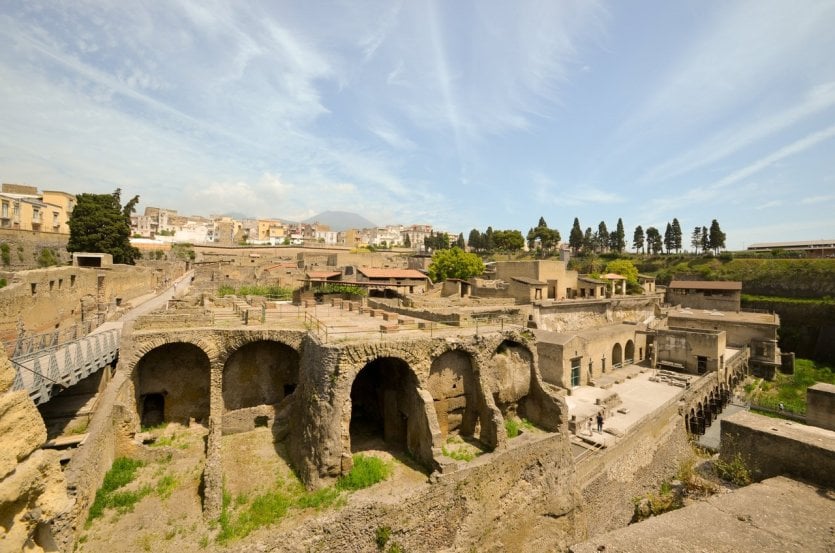
The city of Herculaneum© GigiPeis - Adobe Stock
If Naples is one of our top 10 cities to visit in Italy, it's also because nearby, you can visit the city of Herculaneum in particular. Like Pompeii, Herculaneum succumbed to the terrible eruption of Mount Vesuvius in 79 AD. The inhabitants didn't have time to flee, so everything stayed where it was, and the city of Hercules was buried under the ashes in this state. Although not as famous as Pompeii, we strongly encourage you to visit, as it is much better preserved . In particular, you'll see the exceptional state of preservation of the thermal baths and the houses of the inhabitants. If you'd like to discover the fascinating history of this city frozen in time, we recommend you book a guided tour with our partner. Get ready for a timeless journey!
17. Don't forget to eat in Naples: mangiare!

If there's one memory that will never leave you, it's Neapolitan cuisine (and if you're wondering what to try in Italy, check out our dedicated article "What to eat in Italy? 20 culinary specialties to discover"). Yes, it deserves at least one whole article! The ambassador of its delights is, of course, pizza, which originated in the streets of Naples and is now protected by a "traditional specialty guaranteed" label. Pasta and antipasti also take pride of place, but of course they're better here than anywhere else! You'll enjoy a wide range of fish and seafood dishes, charcuterie, fried meats, mozzarella di bufala produced in Campania, rum babas and sfogliatelle - two sweet specialties -, delicious ice creams, local wine and liqueur.... In short, all you have to do is eat, and then come back for more! Take the opportunity to discover our selection of the best restaurants in Naples.
18. Islands to do around Naples
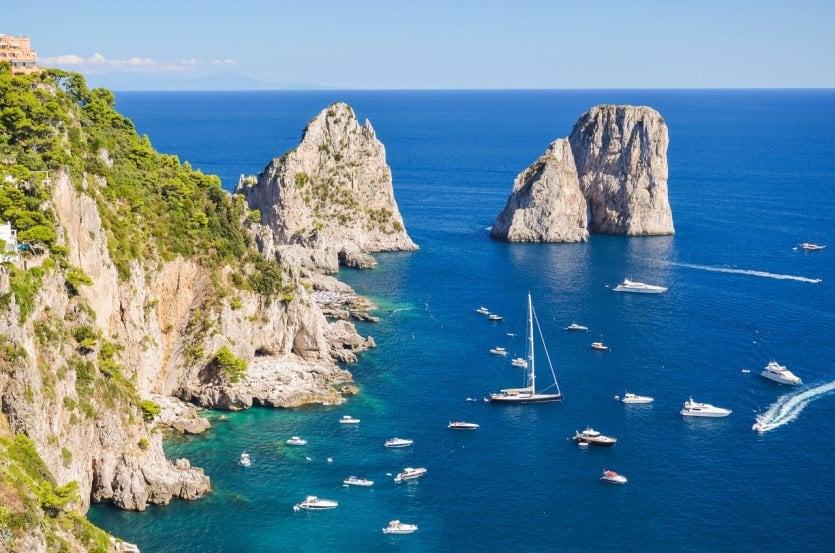
Capri© Darios - Adobe Stock
In addition to cultural excursions, you can also enjoy the seaside pleasures of the islands in the Gulf of Naples. The island of Capri, the most famous to our ears, reveals a wild beauty sculpted by coves, inlets, caves and a rugged coastline. Ischia, Campania's largest island, is famous for its springs and thermal centers, which attract numerous curists. And Procida, the most discreet, cultivates an authentic, unspoilt charm: it's good to stroll along its paths, laze on its coves and watch the fishermen return... It's all part of what makes Naples a must-see destination.
When is the best time to visit Naples?
Naples is a city that can be visited all year round, thanks to its mild climate in winter and plenty of sunshine in summer. Although Naples' peak tourist season is naturally in summer, archaeology enthusiasts can avoid the crowds by visiting in May, June, September and October. During winter, tourist flows drop off considerably, offering an ideal opportunity to visit the sites along the Amalfi Coast in peace and quiet. However, in autumn and winter, many establishments close their doors, particularly in November and early December, making it more difficult for those on a small to medium budget to find accommodation before another peak in the holiday season. To find out more about the ideal time to go,click here!
Getting around Naples
The easiest and cheapest way is to take the bus or metro, which serve all parts of the city. As far as fares are concerned, a single ticket will cost you €1.10 and a day ticket €3.50. If you'd prefer to be more independent and visit the surrounding area without having to worry about timetables, car rental is also a good solution. Click here for the best deals!
Where to stay in Naples? Our selection of the best hotels
Naples is a big city, so it's vital to choose the right area to stay. A central location will be ideal so you can easily get to all the sightseeing you want to do. Here are our top 3 best hotels in Naples!
-Best located :
Hotel Piazza Bellini is set in an elegant 16th-century building in the heart of Naples' historic center, just a 3-minute walk from the Spaccanapoli district... The atmosphere is original and the courtyard superb! Click here for rates and availability.
-For total immersion
The Hotel Rinuccini Relais is located in one of Naples' most beautiful squares, Piazza Dante. For rates and availability, click here !
-The most luxurious
The Grand Hotel Vesuvio is an elegant hotel with a long history of glitz and glitter, which you can book right here. Built by Belgian financier Oscar de Mesnil, who fell in love with Naples, it attracts the most famous celebrities.
What to do in Naples in 3 days
Naples is a fascinating city with a wealth of culture, fascinating history and delicious cuisine. Here's a 3-day itinerary to make the most of Naples:
- Day 1: Discover the historic center
- Morning: Start your day by visiting the Duomo di Napoli (Naples Cathedral) to admire its imposing architecture and the San Gennaro chapel. Then explore Via dei Tribunali, one of the main streets in Naples' historic district, where you can sample authentic Neapolitan pizzas in renowned pizzerias such as Da Michele or Sorbillo.
- Afternoon: Stroll through the narrow streets of the Spaccanapoli district and visit historic churches such as Santa Chiara and San Gregorio Armeno. Take a break in the magnificent Villa Comunale park by the sea, offering panoramic views of the Gulf of Naples.
Dine at one of the seafood restaurants in the Santa Lucia district, located near the waterfront, for fresh fish dishes. End your day with a sfogliatella (Neapolitan pastry) in a local patisserie.
- Day 2: Visit museums and historic sites
- Morning: Start with a visit to the National Archaeological Museum of Naples, home to an incredible collection of artifacts from ancient Rome, including pieces from Pompeii and Herculaneum. Afterwards, head to Castel dell'Ovo, a castle on a small island, for superb views over the bay.
- Afternoon: Explore the Chiaia district and shop in its elegant boutiques. Visit Naples' Royal Palace (Palazzo Reale) and adjacent gardens.
Dine in the Quartieri Spagnoli district, known for its traditional Neapolitan cuisine, and if you get the chance, attend a performance of tarantella, an Italian folk dance, at a local venue.
- Day 3: Excursions around Naples
- Morning: Set off on an excursion to Pompeii, the ancient Roman city buried by the eruption of Mount Vesuvius in 79 AD. Allow several hours to explore this fascinating site.
- Afternoon: Continue your tour with a visit to nearbyHerculaneum, another Roman town well preserved by the eruption of Vesuvius. On your way back to Naples, stop off at the Palazzo Roccella Virtual Museum to learn more about the region's history.
Back in Naples, take advantage of your last evening to stroll along the waterfront, Via Caracciolo, and savor the view of the sunset over the Gulf of Naples.
In any case, don't forget to lose yourself in the narrow streets of Naples, where you'll discover the city's true charm. Naples is also famous for its markets. We recommend a visit to the market on Via San Gregorio Armeno for souvenirs and Neapolitan crib figures.
To find out more, read our article on How to visit Naples in 3 days Itinerary tips!
Naples' must-sees got you in the mood for a trip? Discover also the 21 must-sees in Rome!


